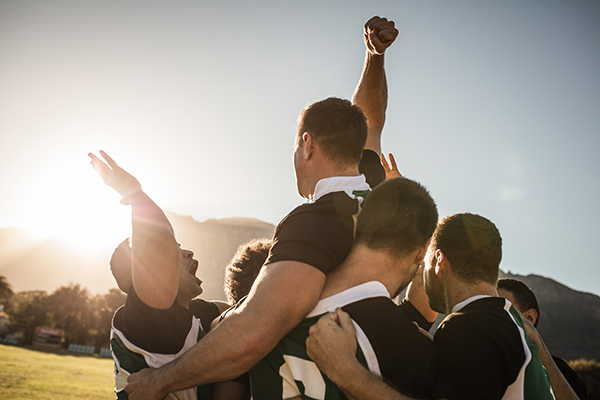
Meniscus tears are one of the most common knee injuries for athletes playing at any level. Athletes that participate in a variety of sports including football, basketball, soccer, and volleyball can often suffer an injury to the meniscus. These injuries are a concern for both the players and their families. Athletes often wonder when they can get back on the field again, or if their injury will prevent them from playing all season.
In sports, meniscus tears are often seen in twisting and pivoting maneuvers or in a contact scenario. In other instances, meniscus tears can occur over time due to previous injuries, age and overuse. A study on NBA players by the American Journal of Sports Medicine, showed that a handful of players are sidelined by torn knee cartilage every season and most make a full recovery over a few months.1
So what is the meniscus? The meniscus is the C-shaped cartilage that stabilizes your knee joint and acts as a shock absorber. Each knee has two menisci that are located between the thigh bone and shin bone. As a weight bearing cartilage, the meniscus endures a lot of stress in sports, which makes it vulnerable to injury.
A tear can be caused by forceful twisting or rotating of the knee, like pivoting or sudden stops or turns. When a tear occurs, there is often pain, swelling, and stiffness in the knee with the inability to fully extend or bend the knee joint. While surgery is not always necessary to repair a torn meniscus, the injury can be serious if not treated properly.
Recovery treatments can often include rest, ice, medications and physical therapy. Treatment and a timeline for returning to sports will need to be evaluated by an orthopedic surgeon and will be specific for each individual. To professionally diagnose a meniscus tear, a sports medicine doctor or orthopedic surgeon will use an MRI to confirm the diagnosis and see what other structures might be injured. A proper diagnosis is crucial to developing the correct treatment plan to return to competitive or recreational sports.
Treatment of a meniscal tear and the timeline for returning to sports are dependent on several factors - the type of tear, other incurred injuries, and the location of the tear. Strengthening the muscles around the knee as well as bracing can help give additional support to the knee. Depending on your symptoms and response to conservative treatment measures, surgery may be the best option. Tears can often require surgery to stabilize the knee for a healthy return to sports. Additional injuries, such as an ACL tear, can lengthen the timeline for return to play.
It is important to return to sports only after functional stability and strength is restored to the knee, under the supervision of a qualified orthopedic surgeon. The timeline and injuries for each athlete are unique. The silver lining for this type of injury is that there is a high rate of return to sports following a meniscus tear.
Dr. Anup Shah is experienced in treating athletes and injuries of the knee, specializing in advanced treatments for the meniscus and ACL. Contact Dr. Shah for an expert treatment plan to safely get you back in the game.









